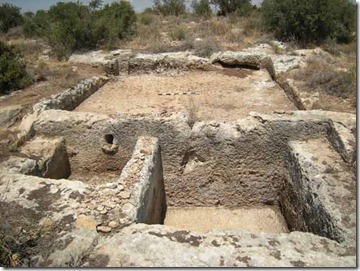Leen Ritmeyer discusses the restoration work on the building that sits over the location of the Antonia Fortress and hopes that they don’t damage the important archaeological remains. (He has an illustration showing where he believes Paul addressed the crowd in Acts 22.)
The Herodium—A Monument to…whose sovereignty? Wayne Stiles provides a surprising twist on this one.
“The greatest church in the world” has been undergoing excavation since 2006 and I had no idea.
Amihai Mazar and Emanuel Tov were among a group of scientists inducted into the Israel Academy of the Sciences and Humanities this week.
The newest issue of Biblical Archaeology Review is the first to carry a photo of the Samson mosaic showing the fox tails on fire. I am disappointed that Samson himself was not preserved. You’ll need a subscription to either the print or digital version to see the photo. For the original press release, see here.
New book: The Photographs of the American Palestine Exploration Society, by Rachel Hallote,
Felicity Cobbing, and Jeffrey B. Spurr. “This volume includes over 150 never previously published photographs of archaeological sites in the Middle East (Jordan, Lebanon, Syria, and Israel) taken in 1875 by photographer Tancrede Dumas for the American Palestine Exploration Society.” 368 pages, $90.
The Dead Sea Scrolls and the Bible exhibit at Southwestern Seminary in Fort Worth closes in one month. If you have the opportunity, I highly recommend it (and I challenge you to find the large
Jerusalem photograph printed in mirror image). Groupon has a 2-for-1 deal, but you’ll have to act fast as these sold out before I could mention it last time.
HT: Jack Sasson, Mark Vitalis Hoffman





